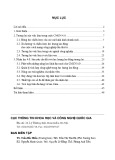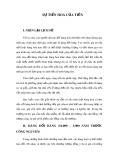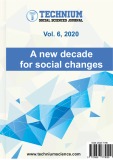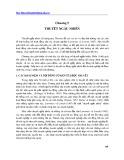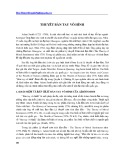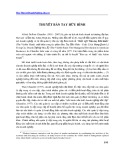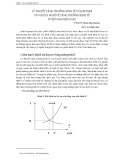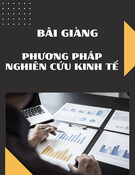
Chapter 36
Five Debates Over Macroeconomic Policy
TRUE/FALSE
1. Many studies indicate changes in monetary policy have most of their effect on aggregate demand about six
months after the change is made.
ANS: T DIF: 1 REF: 36-1
NAT: Analytic LOC: Monetary and fiscal policy TOP: Monetary policy
MSC: Interpretive
2. The laws that created the Fed give the institution only vague recommendations about what goals it should
pursue, and they do not tell the Fed how to pursue whatever goals it might choose.
ANS: T DIF: 1 REF: 36-2
NAT: Analytic LOC: Monetary and fiscal policy TOP: Monetary policy
MSC: Interpretive
3. The Federal Reserve operates under a rule that requires money supply growth by one percentage point for
every percentage point that unemployment rises above its natural rate.
ANS: F DIF: 1 REF: 36-2
NAT: Analytic LOC: Monetary and fiscal policy TOP: Monetary policy
MSC: Interpretive
4. Proponents of a balanced government budget acknowledge that running a budget deficit is justifiable in time
of war.
ANS: T DIF: 1 REF: 36-4
NAT: Analytic LOC: Monetary and fiscal policy TOP: Government debt
MSC: Interpretive
5. In effect, a consumption tax would put all saving automatically into a tax-advantaged savings account similar
to an Individual Retirement Account (IRA).
ANS: T DIF: 2 REF: 36-5
NAT: Analytic LOC: Monetary and fiscal policy TOP: Taxes, saving
MSC: Interpretive
6. One prominent debate over macroeconomic policy centers on the question of whether monetary and fiscal
policy should be used to try to stabilize the economy.
ANS: T DIF: 1 REF: 36-1
NAT: Analytic LOC: Monetary and fiscal policy TOP: Stabilization policy
MSC: Interpretive
7. People’s skepticism about central bankers’ announcements of their intentions stems from the fact that
policymakers may act in a fashion that is time inconsistent.
ANS: T DIF: 2 REF: 36-2
NAT: Analytic LOC: Monetary and fiscal policy TOP: Monetary policy
MSC: Interpretive
8. Proponents of zero-inflation policies acknowledge that the public is unconcerned about the inflation rate.
ANS: F DIF: 1 REF: 36-3
NAT: Analytic LOC: Monetary and fiscal policy TOP: Inflation
MSC: Interpretive
9. Proponents and opponents of balanced-budget policies agree that the government debt cannot continue to
increase forever.
ANS: F DIF: 1 REF: 36-4
NAT: Analytic LOC: Monetary and fiscal policy TOP: Government debt
MSC: Interpretive
66

67 Chapter 36/Five Debates Over Macroeconomic Policy
10. A recession has no benefit to society-it represents a sheer waste of resources.
ANS: T DIF: 1 REF: 36-1
NAT: Analytic LOC: The study of economics and definitions in economics
TOP: Stabilization policy MSC: Definitional
11. A "lean against the wind" policy says the government should not use stabilization policy and simply let the
economy "weather the storm."
ANS: F DIF: 1 REF: 36-1
NAT: Analytic LOC: Monetary and fiscal policy TOP: Stabilization policy
MSC: Definitional
12. Advocates of stabilization policy argue that when there is a recession, the government should increase the
money supply and increase government expenditures.
ANS: T DIF: 1 REF: 36-1
NAT: Analytic LOC: Monetary and fiscal policy TOP: Stabilization policy
MSC: Applicative
13. Economists predict the business cycle well enough that stabilization policy is likely to work despite lags in the
effects of policy.
ANS: F DIF: 2 REF: 36-1
NAT: Analytic LOC: Understanding and applying economic models
TOP: Stabilization policy | Economic forecasts MSC: Definitional
14. The laws that created the Fed give it some specific recommendations about what goals it should pursue so it
has little discretion in making policy.
ANS: F DIF: 2 REF: 36-2
NAT: Analytic LOC: Monetary and fiscal policy
TOP: Monetary policy discretion versus rules MSC: Definitional
15. If the central bank has discretion to make policy, it may create economic fluctuations that reflect the electoral
calendar. This is called the political business cycle.
ANS: T DIF: 1 REF: 36-2
NAT: Analytic LOC: Understanding and applying economic models
TOP: Political business cycle MSC: Definitional
16. If the Fed followed a rule for monetary policy, the time inconsistency problem would be eliminated.
ANS: T DIF: 1 REF: 36-2
NAT: Analytic LOC: Understanding and applying economic models
TOP: Time inconsistency MSC: Interpretive
17. In practice, the problems created by time inconsistency and the political business cycle appear to be quite
serious.
ANS: F DIF: 1 REF: 36-2
NAT: Analytic LOC: Understanding and applying economic models
TOP: Time inconsistency | Political business cycle MSC: Definitional
18. Economists agree that if a monetary policy rule is to be used, the best one makes the growth rate of the money
supply constant.
ANS: F DIF: 1 REF: 36-2
NAT: Analytic LOC: Monetary and fiscal policy
TOP: Monetary policy discretion versus rules MSC: Definitional
19. The cost of inflation reduction is a large, permanent increase in unemployment.
ANS: F DIF: 1 REF: 36-3
NAT: Analytic LOC: Monetary and fiscal policy TOP: Inflation reduction
MSC: Applicative

Chapter 36/Five Debates Over Macroeconomic Policy 68
20. The cost of inflation reduction is less if people believe that the central bank will really reduce inflation.
ANS: T DIF: 2 REF: 36-3
NAT: Analytic LOC: Monetary and fiscal policy TOP: Inflation reduction
MSC: Applicative
21. It is possible that the cost of inflation reduction might be quite large compared to the annual costs of moderate
inflation.
ANS: T DIF: 1 REF: 36-3
NAT: Analytic LOC: Monetary and fiscal policy TOP: Inflation reduction
MSC: Applicative
22. There are ways that policymakers could reduce the costs of inflation without reducing inflation.
ANS: T DIF: 1 REF: 36-4
NAT: Analytic LOC: Monetary and fiscal policy TOP: Inflation costs
MSC: Applicative
23. When the government has a deficit, a burden is necessarily imposed on future generations of taxpayers.
ANS: F DIF: 1 REF: 36-4
NAT: Analytic LOC: Monetary and fiscal policy
TOP: Budget deficits | Generational effects of deficits MSC: Applicative
24. The average U.S. citizens' share of the government debt represents about 10 percent of her lifetime income.
ANS: F DIF: 1 REF: 36-4
NAT: Analytic LOC: Monetary and fiscal policy TOP: Burden of the debt
MSC: Definitional
25. Social Security transfers wealth from younger generations to older generations.
ANS: T DIF: 1 REF: 36-4
NAT: Analytic LOC: The role of government TOP: Burden of the debt
MSC: Applicative
26. The major driver of future federal spending is rising health care costs.
ANS: T DIF: 1 REF: 36-4
NAT: Analytic LOC: The role of government TOP: Burden of the debt
MSC: Applicative
27. The major driver of future federal spending is rising energy costs.
ANS: F DIF: 1 REF: 36-4
NAT: Analytic LOC: The role of government TOP: Burden of the debt
MSC: Applicative
28. A nation's saving rate is not a primary determinant of its long-run economic prosperity.
ANS: F DIF: 1 REF: 36-4
NAT: Analytic LOC: Understanding and applying economic models
TOP: Saving MSC: Interpretive
29. Once state and federal taxes are added together, a typical worker faces about a 40 percent marginal tax-rate on
interest income.
ANS: T DIF: 1 REF: 36-4
NAT: Analytic LOC: Understanding and applying economic models
TOP: Saving incentives MSC: Definitional
30. Tax laws do not give preferential treatment to some kinds of retirement saving.
ANS: F DIF: 1 REF: 36-5
NAT: Analytic LOC: The study of economics and definitions in economics
TOP: Saving incentives MSC: Definitional

69 Chapter 36/Five Debates Over Macroeconomic Policy
31. Some studies have found that saving is not very sensitive to the rate of return on saving.
ANS: T DIF: 1 REF: 36-5
NAT: Analytic LOC: Monetary and fiscal policy TOP: Saving incentives
MSC: Definitional
32. A reduction in the marginal tax-rate includes a substitution effect that tends to increase savings.
ANS: T DIF: 1 REF: 36-5
NAT: Analytic LOC: Monetary and fiscal policy
TOP: Income and substitution effect | Saving incentives MSC: Applicative
33. A reduction in the marginal tax-rate includes an income effect that tends to increase savings.
ANS: F DIF: 1 REF: 36-5
NAT: Analytic LOC: Monetary and fiscal policy
TOP: Income and substitution effect | Saving incentives MSC: Applicative
34. In essence, a consumption tax puts all saving into tax-advantaged savings accounts.
ANS: T DIF: 1 REF: 36-5
NAT: Analytic LOC: Monetary and fiscal policy TOP: Saving incentives
MSC: Interpretive
35. If real output grows at 3 percent per year and the inflation rate is 3 percent per year then government debt can
grow by 6 percent per year and not increase the ratio of debt to income.
ANS: T DIF: 1 REF: 36-5
NAT: Analytic LOC: Understanding and applying economic models
TOP: Debt-to-income ratio MSC: Interpretive
36. Forward looking parents can reverse the adverse effects of government debt by saving more and leaving a
larger bequest to their children.
ANS: T DIF: 1 REF: 36-5
NAT: Analytic LOC: Understanding and applying economic models
TOP: Saving MSC: Interpretive
SHORT ANSWER
1. Explain the main arguments in favor of economic stabilization.
ANS:
Fluctuations in the economy-recessions and booms-are costly. Recessions in particular are a waste of resources,
since people and machines are idle when they could be producing goods and services. Stabilization policies can help
to eliminate this waste of resources.
DIF: 1 REF: 36-1 TOP: Stabilization policy
MSC: Interpretive
2. Explain why policy lags could make stabilization policies counterproductive.
ANS:
As the textbook explains, it takes time to recognize an economic problem, to take action, and for that action to have
its effect on the economy. By the time a policy is enacted and takes effect, the economy may have already
recovered. So policy will end up being destabilizing; it may actually result in larger economic fluctuations.
DIF: 1 REF: 36-1 TOP: Stabilization policy
MSC: Interpretive

Chapter 36/Five Debates Over Macroeconomic Policy 70
3. Which kind of lag is important for monetary policy? Which kind of lag is important for fiscal policy?
ANS:
Both are prone to lags, but the lags are different for the two types of policy. Monetary policy can be enacted quickly,
but because it works through changes in interest rates and investment, it may take a long time to have an impact.
Fiscal policy works with a long lag due to the polictical process that must be followed, including congressional
committees and the requirement of Presidential approval.
DIF: 1 REF: 36-1 TOP: Policy lags
MSC: Interpretive
4. Suppose that changes in aggregate demand tended to be infrequent and that it takes a long time for the
economy to return to long-run output. How would this affect the arguments of those who oppose using policy
to stabilize output?
ANS:
Those who oppose stabilization policy mostly argue that by the time policy can be put into action and affect
aggregate demand, economic conditions may have changed so that the policy is no longer appropriate. If the
economy tended to stay on one side of the natural rate of output for a long time, policymakers could worry less
about lags.
DIF: 3 REF: 36-1 TOP: Stabilization policy
MSC: Analytical
5. What is the political business cycle and how does it relate to whether the central bank should have discretion
or use a rule?
ANS:
The political business cycle describes the idea that politicians may manipulate the economy to serve their own
political ends. For example, the political party in power might want to generate an economic boom prior to an
election, even if this policy is ultimately not in the best interest of the country. If the central bank had to follow a
policy rule it would be unable to manipulate monetary policy for political gain.
DIF: 1 REF: 36-2 TOP: Political business cycle
MSC: Analytical
6. Explain the time inconsistency of monetary policy.
ANS:
Time inconsistency refers to the idea that policymakers may have an incentive to say one thing but do something
different. For example, the Fed may wish to announce a tight monetary policy, in a bid to reduce expectations about
inflation, but if inflation expectations fall, it may want to enact a loose monetary policy, in order to stimulate the
economy. The result is likely to be a loss of the Fed's credibility and a higher expected inflation rate.
DIF: 2 REF: 36-2 TOP: Time inconsistency
MSC: Analytical
7. Describe three costs of inflation.
ANS:
There are several costs of inflation. Shoeleather costs are the resources people spend to economize on their money
holdings when inflation is high. Menu costs are the costs created by changing price tags and prices in menus and
catalogs. Increased relative price variability from higher inflation distorts signals provided by relative price changes
and so misallocates resources. Distortions created by inflation in the tax code discourage saving and so may lower
the standard of living. Unexpected inflation arbitrarily redistributes wealth. In general a changing value of the unit
of account creates inconvenience.
DIF: 1 REF: 36-3 TOP: Inflation costs
MSC: Definitional

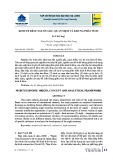

![Tương lai của năng suất: Tổng luận [Nghiên cứu mới nhất]](https://cdn.tailieu.vn/images/document/thumbnail/2021/20210201/caygaocaolon10/135x160/3821612151169.jpg)
